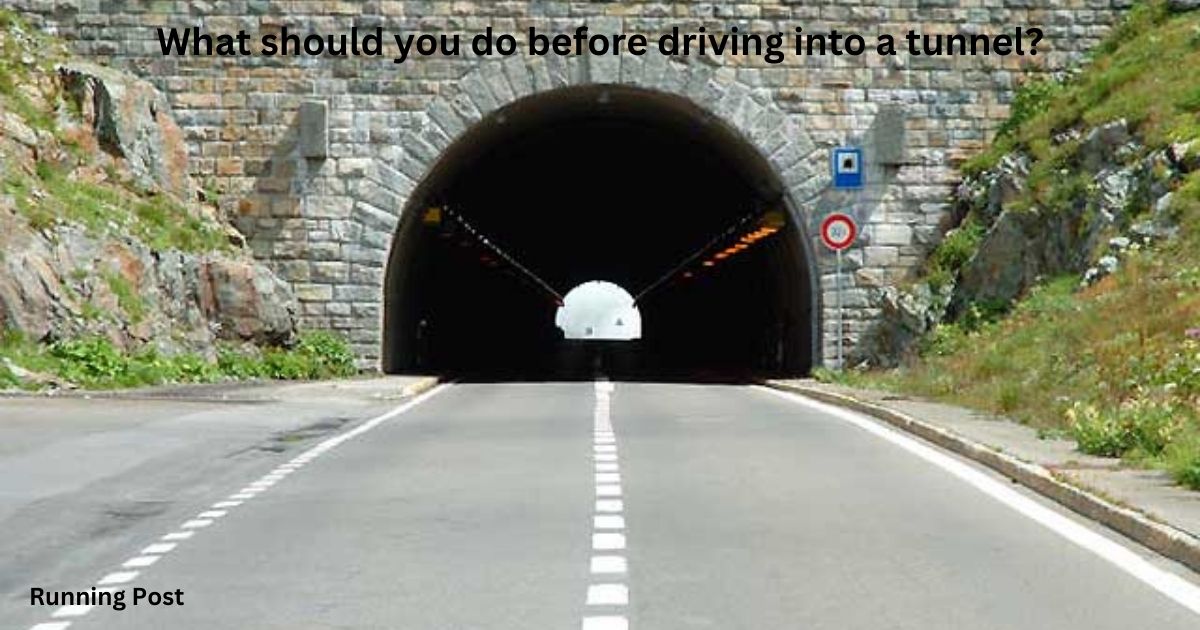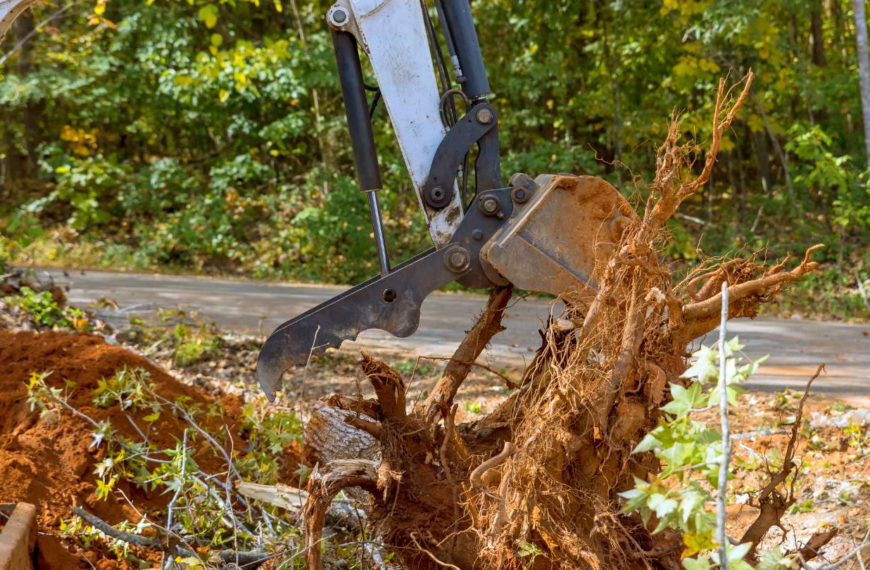| A: Close your sunroof | B: Remove your sunglasses | C: Switch off the radio | D: switch on your windscreen wiper replacement |
Essential Preparations Before Driving Into a Tunnel
When approaching a tunnel, taking the right steps before entering can ensure a smooth and safe journey. Tunnels present unique driving conditions that can catch even experienced drivers off guard. The changes in lighting, space constraints, and often a confined driving environment require specific preparations. Ensuring that your vehicle and your mindset are ready before entering is crucial.
Key Preparations Before Entering a Tunnel:
- Prepare for Reduced Visibility: Tunnels can be dimly lit or transition quickly from bright daylight to darkness. Your eyes need time to adjust, so taking off any items that may hinder your vision, such as sunglasses, is vital.
- Ensure Vehicle Readiness: Your car should be in good working condition. Faulty headlights, brake lights, or even windshield wipers can pose significant dangers inside a tunnel.
- Mind the Traffic Conditions: Tunnels often have heavy traffic, and sudden braking or unexpected lane changes can lead to accidents. Preparing in advance by adjusting your speed and staying alert can prevent mishaps.
- Focus on the Road Ahead: Tunnels require your full attention. Avoid distractions and keep your hands on the wheel, as tunnels can be narrow and often have tight bends.
By following these essential steps, drivers can better handle the unique challenges of tunnel driving, ensuring not only their safety but also the safety of others on the road.
What Must You Do Before Driving Through a Tunnel?
Remove Your Sunglasses:
Driving into a tunnel requires you to quickly adapt to changes in lighting conditions. One of the simplest yet most effective steps you can take is to remove your sunglasses before entering. Tunnels often have lower light levels compared to the outside environment. Keeping your sunglasses on can significantly reduce your visibility, making it harder to see potential obstacles or traffic ahead.
- Improve Visual Clarity: Sunglasses reduce the amount of light entering your eyes, which can be helpful in bright sunlight but detrimental in a tunnel. By removing them, you allow your eyes to receive more light, enhancing your ability to see clearly.
- Adjust to Lighting Changes: The transition from bright daylight to the dimmer environment of a tunnel can be jarring. Without sunglasses, your eyes can adjust more quickly to the change, reducing the risk of temporary blindness or disorientation.
- Avoid Delayed Reactions: Poor visibility can lead to delayed reactions, especially in a confined space like a tunnel where you may need to react quickly. By removing your sunglasses, you minimize this risk, allowing for more immediate responses to road conditions or traffic changes.
Taking off your sunglasses is a simple habit that can make a significant difference in tunnel driving safety.
Check Your Lights:
Before driving into a tunnel, it’s important to ensure that all your vehicle’s lights are functioning properly. Headlights, brake lights, and indicators play a crucial role in maintaining visibility and communicating with other drivers.
- Ensure Visibility for Others: Properly functioning headlights and taillights make your vehicle visible to other drivers, which is especially important in the dimly lit environment of a tunnel.
- See and Be Seen: Good visibility is a two-way street. Your headlights help you see the road ahead, while your taillights help other drivers see you, particularly when driving at lower speeds or in congested traffic.
- Check Indicators: If you need to change lanes or make a turn inside the tunnel, functioning indicators are essential for signaling your intentions to other drivers.
Ensuring that your vehicle’s lights are in good working order before entering a tunnel is a key aspect of safe driving.
Adjust Your Speed:
Approaching a tunnel requires a shift in driving behavior, particularly when it comes to speed. Reducing your speed before entering a tunnel is critical for maintaining control and avoiding accidents.
- Anticipate Traffic Conditions: Tunnels often lead to congestion or slow-moving traffic. Reducing your speed before entering gives you more time to react to changes in traffic flow.
- Maintain Control: Lower speeds make it easier to navigate the tight confines of a tunnel, reducing the risk of collisions with other vehicles or the tunnel walls.
- Prepare for Lane Changes: Some tunnels may require you to switch lanes or navigate sharp curves. Approaching these changes at a slower speed allows for smoother and safer transitions.
Adjusting your speed before entering a tunnel is a simple yet effective way to enhance safety.
Ensure a Clear Windshield:
Visibility is paramount when driving through a tunnel, and a clean windshield is essential for clear sightlines.
- Reduce Glare: A dirty or smudged windshield can cause glare from tunnel lights, reducing visibility and increasing the risk of accidents.
- Improve Reaction Time: Clear visibility through a clean windshield allows you to react more quickly to obstacles or changes in traffic conditions.
- Enhance Night Vision: Many tunnels are poorly lit, and a clean windshield can improve your night vision by reducing distortions caused by dirt or smudges.
Taking a moment to clean your windshield before entering a tunnel can significantly improve your driving experience and safety.
Safe Driving Practices Inside a Tunnel
Driving inside a tunnel requires heightened attention and adherence to specific safety practices. The confined space, potential for heavy traffic, and the unique environment of a tunnel all demand careful driving. Once inside, it’s important to maintain a steady speed, stay in your lane, and be aware of your surroundings. Safe driving practices inside a tunnel not only protect you but also contribute to the overall safety of everyone on the road.
Key Points for Safe Driving Inside a Tunnel:
- Maintain a Consistent Speed: Sudden speed changes can cause accidents, especially in heavy traffic. Keep a steady pace and avoid unnecessary braking.
- Stay in Your Lane: Lane discipline is critical in tunnels, where space is often limited. Avoid lane changes unless absolutely necessary.
- Be Aware of Lighting Conditions: Tunnel lighting can vary, so ensure your headlights are on and properly adjusted to avoid blinding other drivers.
- Prepare for Unexpected Stops: Traffic can come to a halt without warning in a tunnel. Stay alert and be ready to react quickly.
By following these practices, drivers can navigate tunnels safely and confidently.
What Should You Do When You Drive Into a Tunnel With Lights?

Turn on Low-Beam Headlights:
When driving into a tunnel, it’s essential to use your low-beam headlights. High beams can blind other drivers and are less effective in the confined space of a tunnel. Low beams provide adequate illumination of the road ahead without causing glare for oncoming traffic.
- Improve Road Visibility: Low beams illuminate the road ahead without reflecting off the tunnel walls, which can happen with high beams.
- Avoid Blinding Other Drivers: Using low beams prevents you from blinding drivers coming from the opposite direction, which is particularly important in narrow tunnels.
- Comply with Traffic Regulations: Many tunnels have specific regulations regarding headlight use. Low beams are often required by law to ensure safety for all road users.
Proper use of headlights is crucial for safe tunnel navigation.
Maintain a Steady Speed:
Speed consistency is key when driving through a tunnel. Abrupt changes in speed can lead to accidents, especially in the confined and often crowded conditions of a tunnel.
- Avoid Sudden Braking: Maintaining a steady speed reduces the need for sudden braking, which can cause accidents in heavy traffic.
- Promote Smooth Traffic Flow: A consistent speed helps maintain a smooth flow of traffic, reducing congestion and the risk of collisions.
- Enhance Vehicle Control: Driving at a steady pace allows for better control of your vehicle, making it easier to navigate any curves or bends in the tunnel.
Keeping a steady speed contributes to a safer and more efficient drive through a tunnel.
Stay in Your Lane:
Lane discipline is especially important in a tunnel, where space is limited and traffic is often heavy. Staying in your lane helps prevent collisions and keeps traffic flowing smoothly.
- Reduce the Risk of Collisions: Changing lanes in a tunnel can lead to accidents, particularly if other drivers are not expecting it. Staying in your lane minimizes this risk.
- Follow Lane Markings: Tunnels are typically well-marked, with clear lane lines to guide drivers. Adhering to these markings ensures safe navigation.
- Avoid Abrupt Movements: Sudden lane changes can cause confusion and accidents. Staying in your lane helps maintain predictability for other drivers.
Maintaining lane discipline is a critical aspect of safe tunnel driving.
You Also Like It:
What does fuel-efficient driving achieve?
What Should You do to Avoid Fuel Spillage?
What can cause excessive or uneven tyre wear?
What Should a Driver Do If Traffic Comes to a Halt in a Tunnel?
Keep a Safe Distance:
When traffic comes to a halt in a tunnel, it’s important to maintain a safe distance between your vehicle and the one in front of you. This buffer allows you to react if the traffic starts moving again suddenly.
- Prevent Rear-End Collisions: A safe distance gives you time to react if the vehicle in front of you starts moving or stops unexpectedly.
- Allow for Emergency Maneuvers: Keeping a buffer zone provides space to maneuver in case of an emergency, such as a sudden stop by the vehicle ahead.
- Reduce Stress: Maintaining a safe distance can help reduce stress in congested traffic situations, making for a safer driving experience.
A safe following distance is crucial in the confined environment of a tunnel.
Turn on Hazard Lights:
If traffic comes to a complete stop inside a tunnel, turning on your hazard lights is a good way to alert drivers behind you to the situation.
- Increase Visibility: Hazard lights make your vehicle more visible to other drivers, reducing the risk of rear-end collisions.
- Communicate the Situation: Activating hazard lights signals to other drivers that traffic has come to a halt, prompting them to slow down.
- Enhance Safety in Low Light: In the dim lighting of a tunnel, hazard lights are especially effective in improving your vehicle’s visibility.
Using hazard lights is a simple yet effective way to enhance safety in stopped traffic.
Avoid Engine Idling:
In the event of a prolonged stop, consider turning off your engine to prevent overheating and reduce fuel consumption.
- Prevent Overheating: Tunnels can be enclosed and warm, making it easier for engines to overheat if left idling for too long.
- Save Fuel: Turning off your engine during long stops can save fuel, which is particularly important if the stop is unexpected and you have limited fuel remaining.
- Reduce Exhaust Emissions: Idling vehicles can contribute to poor air quality in the confined space of a tunnel. Turning off your engine helps reduce harmful emissions.
Avoiding unnecessary engine idling is good for both your vehicle and the environment.
Emergency Situations in Tunnels
Emergencies can happen anytime, anywhere—even in tunnels. Knowing how to respond effectively in these situations is crucial for your safety and the safety of others. Whether it’s a vehicle breakdown or an unexpected stop, being prepared and knowing the right actions to take can make all the difference.
Steps to Take in an Emergency:
- Stay Calm and Assess the Situation: Panic can lead to poor decision-making. Take a deep breath and evaluate your surroundings.
- Use Emergency Phones: Many tunnels are equipped with emergency phones that connect directly to tunnel control rooms. Use them if needed.
- Follow Tunnel Safety Protocols: Tunnels often have specific safety protocols in place, including designated evacuation routes and emergency exits. Familiarize yourself with these as you enter.
Being prepared for emergencies in tunnels can save lives and prevent further accidents.
What to Do in Case of a Breakdown
Pull Over to the Side:
If your vehicle breaks down inside a tunnel, pulling over to the side is the first step in ensuring your safety and minimizing disruption to other traffic.
- Find a Safe Spot: If possible, pull over to the emergency lane or as close to the tunnel wall as you can.
- Avoid Blocking Traffic: Keeping your vehicle out of the main traffic flow reduces the risk of causing accidents or further congestion.
- Turn on Hazard Lights: Once you’ve pulled over, activate your hazard lights to alert other drivers to your situation.
Pulling over safely is the first step in managing a vehicle breakdown in a tunnel.
Exit the Vehicle Safely:
In some cases, it may be necessary to exit your vehicle after pulling over in a tunnel. However, this should only be done if it’s safe to do so.
- Assess the Situation: Before exiting, ensure it’s safe and that there’s no oncoming traffic that could pose a danger.
- Move to a Safe Location: If possible, exit the vehicle on the side away from traffic and move to a safer location, such as an emergency exit or designated safe area.
- Avoid Walking in Traffic Lanes: Never walk in the traffic lanes of a tunnel. Stay as close to the tunnel wall as possible if you must walk.
Exiting your vehicle safely in a tunnel can prevent further accidents and ensure your safety.
Contact Tunnel Authorities:
Once you’ve safely exited your vehicle or if you’re unable to move your vehicle, contact tunnel authorities for assistance.
- Use Emergency Phones: Most tunnels are equipped with emergency phones that connect directly to tunnel control rooms. These phones are typically located at regular intervals along the tunnel walls.
- Provide Accurate Information: When contacting tunnel authorities, provide clear and accurate information about your location and the nature of the emergency.
- Wait for Assistance: After contacting authorities, wait for assistance in a safe location. Do not attempt to move your vehicle on your own if it poses a danger.
Contacting tunnel authorities ensures that help is on the way and that the situation is managed safely.
You Also Like It:
Releated Posts
MAB Instructor Certification: Your Gateway to Professional Crisis Management Leadership
In today’s fast-evolving professional environments—especially in healthcare, mental health, education, and corrections—conflict and aggression can arise without warning.…
Freewayget.com: Your Ultimate Platform for Deals, Discounts, and Digital Products
Introduction to Freewayget.com In today’s fast-paced digital world, finding reliable platforms that offer authentic discounts, deals, and digital…
Affordable & Fast Embroidery Digitizing Services in Your Area
Embroidery digitizing services provide corporations, designers, and people with brilliant embroidery-equipped designs by means of changing art work…
Introduction to hdhub4u nit
In this article, we will delve into the details of hdhub4u nit, exploring its features, benefits, and why…

















